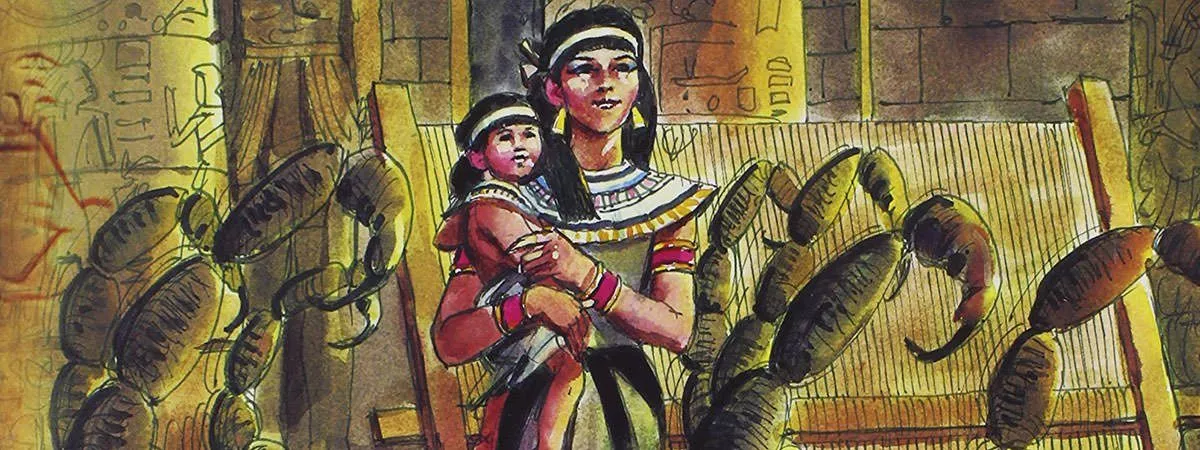Isis was an ancient Egyptian goddess who was one of the most worshiped deities in Egyptian culture. The origin of Isis can be traced back to the Osiris Myth, which tells the story of her brother-husband Osiris, who is murdered by his brother Set. Isis then resurrects her husband and her son Horus, takes back his rightful place on the throne. Isis fulfills a variety of roles in Egyptian mythology, including that of a wife, a mourner, a mother and a magic healer. In art and sculpture, she is represented as a human woman who wears a long throne-like structure on her head.
In the New Kingdom of ancient Egypt, Isis overtook the traits that were used to define another goddess named Hathor and was further portrayed as wearing horns of a cow with a sun disk in the middle. During this time, Isis became the most worshiped goddess in Egyptian culture. During Greek rule in Egypt, Isis was worshiped by both Greeks and Egyptians. Her cult subsequently spread throughout the Roman Empire. Know more about the ancient Egyptian goddess Isis through these 10 interesting facts.
#1 ISIS GREW FROM AN OBSCURE DEITY TO THE MOST WORSHIPED GODDESS IN EGYPT
Isis was one of the most venerated deities in ancient Egypt. Her name, Isis, is a Greek corruption of an Egyptian name and it literally means Queen of the Throne. In Egyptian mythology, the principal ennead (group of nine) was the Great Ennead of Heliopolis. This comprised of nine principal ancient Egyptian deities; headed by the sun god and creator Re or Re-Atum; followed by Shu and Tefnut, deities of air and moisture; Geb and Nut, who represented earth and sky; and the children of Geb and Nut: Osiris, Isis, Seth and Nephthys.
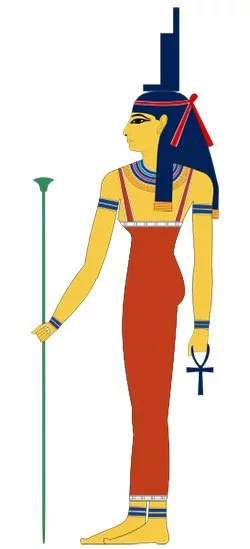
Isis, as well as her husband-brother Osiris, have not been clearly mentioned in Ancient Egypt till the Fifth Dynasty (c. 2494 – 2345 BCE). Thus initially Isis was an obscure goddess, who lacked dedicated temples. However, she grew in importance as the dynastic age progressed, until she became one of the most important deities of ancient Egypt. In first millennium BCE, Isis, along with Osiris, became the most widely worshiped Egyptian deities. Her cult subsequently spread throughout the Roman Empire; and at a time, she was worshiped from England to Afghanistan. There are still some people who continue to worship Isis.
#2 HER ORIGIN MAY BE TRACED TO THE FAMOUS OSIRIS MYTH
The origin of Isis can be traced to the Osiris Myth of the Old Kingdom (c. 2686 BCE – 2181 BCE) of Ancient Egypt. The Osiris myth is the most important as well as famous story in ancient Egyptian mythology. According to it, Osiris, and his sister-wife, Isis, were the rulers of the world shortly after its creation. Men and women were initially highly uncivilized. However, due to the gifts of Isis and the teachings of Osiris, they were taught the art of agriculture, culture and a way to live a civilized life. However, Set, the brother of Osiris, became jealous of the power and the prestige held by Osiris and plotted to murder him to take over his throne. He tricked Osiris into laying into a coffin, locked it and threw it into the river Nile. When Isis learned of this, she set out to find the coffin to bring her husband back to life. Meanwhile, the coffin was stuck in a tree which was taken by Malcander, the king of Byblos.
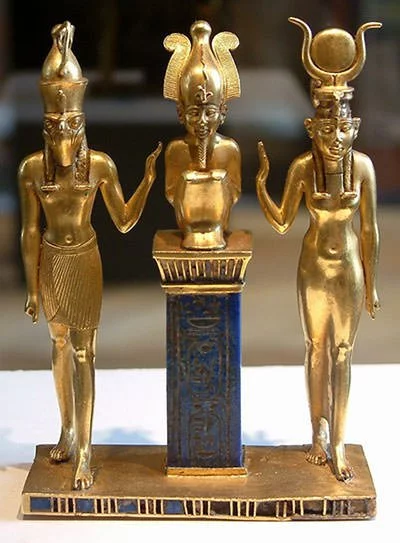
In Byblos, Isis met Astarte, who was the wife of Malcander and she stayed in the palace disguised as an old woman. When her true form as a goddess was revealed to Malcander and Astarte, they pleaded for her mercy and offered her anything she wanted. Isis took the tree in which her husband was stuck and tried to find a way to release and revive Osiris. She cut the tree and took the body of Osiris back to Egypt and hid him in the deltas of Nile. However, while Isis had gone to collect herbs which would help revive her husband, Set came to know about her plan. He then cut the body of Osiris in pieces and threw them all over the land and in the river Nile.
#3 SHE WAS REFERRED TO AS THE VIRGIN MOTHER
On finding what Set had done to her husband’s body, Isis searched for the various body parts to put them back together. She managed to find all of the parts except his penis, which was thrown in the river and then subsequently eaten by a fish. Nonetheless she was able to revive her husband by placing his body together. After reviving Osiris from the dead, Isis realized that without a penis, she and Osiris would not be able to have a child.
Even though Osiris was now alive, he was unable to rule the land of the living as he was considered incomplete. He was sent to the afterlife where he assumed the position of the Lord of the Underworld. However, before that, Isis transformed herself into a kite to draw the seed of Osiris into her body. She flew over Osiris and was successfully able to conceive his child, Horus. Due to this, she is often referred to as the Virgin Mother. The story of the miraculous birth of Horus may be linked to similar myths in other religions. Moreover, “many of the attributes of Isis, the Virgin Mother are identical with those of Mary, the Mother of Christ.”
#4 SHE HAD TO FACE DIFFICULT CIRCUMSTANCES WHILE RAISING HER SON
Once she was pregnant, Isis hid in the swamps of the deltas of the river Nile to protect herself and her son, Horus, from Set. She had a difficult pregnancy, most of which was spent hiding from Set and his demons. Isis gave birth to Horus in the swamps of the Delta, where she was alone. Moreover, she had a long and difficult labor. Isis and her son were offered protection from Set by the goddesses Selket and Neith. Horus was thus nurtured and educated by three goddesses.

When Horus became an adult and strong enough to take on his uncle Set, he challenged Set for the throne of Egypt. A council of gods was responsible for resolving the conflict between Set and Horus. While most Gods chose Horus as the successor to his father’s throne; Ra, the supreme god, supported Set because he was older and, therefore, wiser and more experienced. Due to this, the conflict went on for more than 80 years. The two had to go through a series of battles to prove their competence for the throne. Even though all the battles were won by Horus, Ra continued to deny him his rightful position. This led to Isis tricking Set into condemning himself and Horus ultimately becomes the ruler of Egypt.
#5 ISIS WAS WORSHIPED AS THE MOTHER GODDESS
According to some earlier myths, Hathor is the mother of Horus. However, as the Osiris myth became the most influential of the Egyptian myths, Isis came to be regarded as the mother of Horus. Due to this, the relationship of Isis with her son, Horus, became idealized as the epitome of mother-son relationships in Ancient Egyptian religion. In the Osiris myth, Isis makes numerous sacrifices for Horus and offers him protection when he is an infant. Not only this, she assists her son throughout his life and helps him in taking back the throne of Egypt.
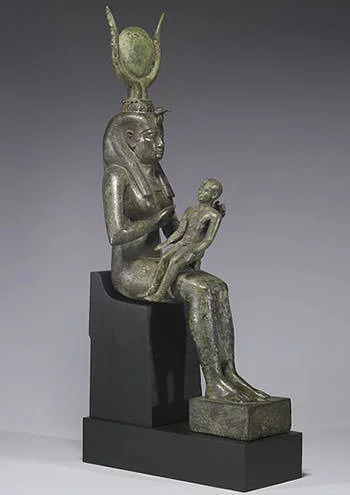
Due to the Osiris Myth, Isis came to be seen as the epitome of maternal devotion and this, in turn, led to her being worshiped as a Mother Goddess. In Ancient Egypt, by the time of the New Kingdom (16th century BCE – 11th century BCE), Isis was seen as the mother of the pharaoh. She is thus often depicted breastfeeding the pharaoh in depictions from this era.
#6 SHE IS DEPICTED AS A COMPASSIONATE AND FORGIVING GODDESS
In Egyptian mythology, Isis is depicted as compassionate and kind. The most famous story about her forgiveness is known as Isis and the Seven Scorpions. This story is used to portray the kindness shown by Isis even to those who were not kind to her. When Horus was young and Isis was in hiding to protect her son from Set, she was accompanied by seven scorpions whenever she stepped out to gather food and water. These scorpions were her bodyguards, with three of them moving in front of her, two on either side of her and two following behind her to protect her from all sides.
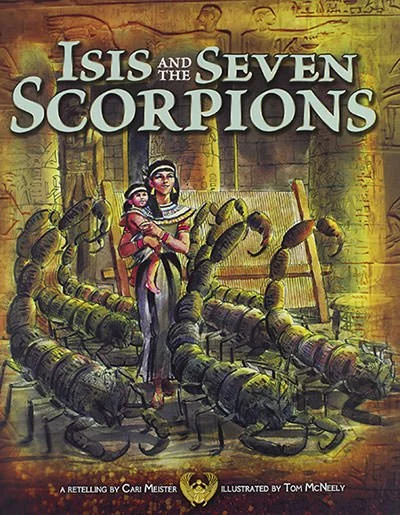
Isis, while leaving the swamp, would conceal her divine glory and become a poor and old woman. This once caused a rich noblewoman to look down upon her and refuse her food and shelter. Enraged, the scorpions stung the young son of the noblewoman and she ran to the streets asking for help to revive her son. Listening to the woman’s cry, Isis came forward to help her. She took the child in her arms and dominated the power of the scorpions by calling them by their secret names. This reversed the power of the sting and the boy was saved. This story, where she helps the woman who showed her no kindness, is one of many examples of the compassionate nature of Isis.
#7 ISIS TOOK ON A NUMBER OF ROLES IN EGYPTIAN MYTHOLOGY
Apart from being a Mother Goddess, Isis took on a number of other roles. In afterlife beliefs in Ancient Egypt, she helped restore the souls of deceased humans to wholeness as she had done for Osiris. She welcomed the deceased in the afterlife as a mother providing them with protection and nourishment. The Egyptian pharaoh was seen as a manifestation of Horus in life and Osiris in death. Isis was therefore the mythological mother and wife of pharaohs. Isis was also associated with magical powers which enabled her to revive Osiris and to protect and heal Horus. By virtue of her magical knowledge, she was said to be “more clever than a million gods”.
There are also numerous myths which show her cunning in dealing with situations. Among other things, she uses her wit to outmaneuver Set during his conflict with her son. Isis was also linked with the flood, which was sometimes equated with the tears she shed for Osiris. Moreover, Isis was seen as a cosmic goddess with various texts claiming that she organized the behavior of the sun, moon and stars; governing time and the seasons which, in turn, guaranteed the fertility of the earth. The symbol of Isis in the heavens was Sirius, the brightest star in the night sky which signified wealth and prosperity in Ancient Egypt.
#8 ALONG WITH HER SISTER, SHE REPRESENTED THE COSMIC BALANCE OF THE WORLD
By first millennium BCE, Isis was one of the most worshiped deities in Egypt and she gradually absorbed traits from many other goddesses. As the one who had the power to flood the Nile, she was called Sati. As the one who embraced the land and provided fertility by her waters, she was called Anqet. As the goddess of cultivated lands and fields, she was Sekhet. As the goddess of the harvest, she was Renenet. As one linked to rebirth, she was associated with the Phoenix. As the producer and giver of life, she was Ankhet.
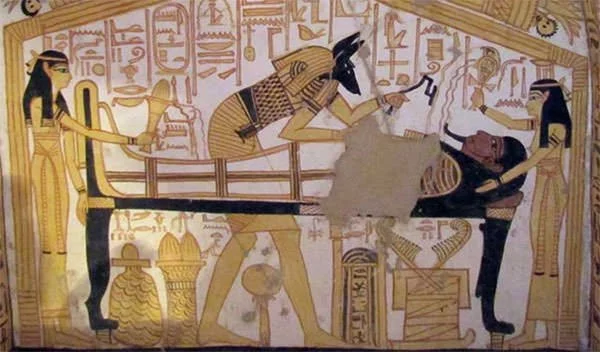
The concept of balance in Ancient Egypt was also portrayed by Isis and her twin sister, the Goddess Nephthys. Isis represented the light and Nephthys represented the dark. Similarly, Isis represented life and Nephthys stood for death. However, this doesn’t mean that Nephthys was perceived as evil. Instead, the sisters represented the cosmic balance between the two opposite ends of the spectrum.
#9 A TEMPLE OF ISIS WAS UNEARTHED DURING THE EXCAVATION OF POMPEII
Isis was regarded as a powerful goddess throughout Ancient Egypt. There are various temples and places of worship built in her honor. The first large temple that was dedicated to Isis was built near the Nile delta, at Behbeit el-Hagar. In earlier shrines at the site, Isis may have been worshiped alongside Osiris and Horus. Another temple dedicated to Isis is located at the island of Philae. The Philae Temple was built during the reign of Nectanebo I (380 BCE – 362 BCE) and it was regarded as one of the most important temples of ancient Egypt. Moreover, the Philae Temple of Isis is considered by many to be the last of the ancient temples constructed in the “classic” Egyptian style.
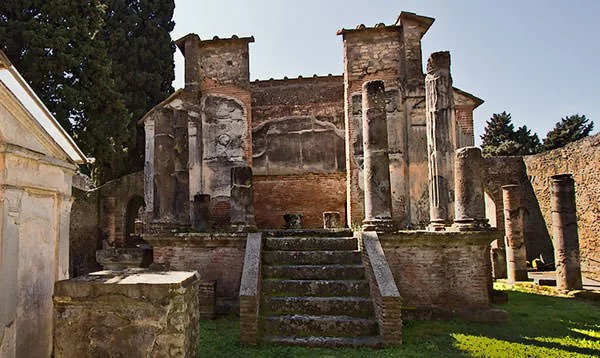
A famous temple of Isis may be seen at Pompeii, an ancient Roman city which was destroyed by a volcanic eruption; and thus preserved. The temple of Isis was one of the first discoveries during the excavation of Pompeii in 1764. Well preserved and almost intact, the temple served as a source of inspiration for many artists across the art world. Among others, the famous composer Wolfgang Amadeus Mozart is known to have visited the Temple of Isis at Pompeii in 1769.
#10 CULT OF ISIS MAY HAVE INFLUENCED CHRISTIANITY
Worshipers of Isis are sometimes known as ‘Isiacs’. The Cult of Isis majorly consisted of people from lower social classes. The representation of women in the cult of Isis was far more significant as compared to a cult of any other deity. It provided women with a space where they could act outside the control of the boundaries set by the principles and cultures of the time. When the Roman Empire became dominated by Christianity, some of the practices that were followed by the Isiacs may have been converted into Christian traditions.
There is extensive focus and studies on the traditions in Christianity which have seemingly been adopted from other mysterious pagan cults, such as that of Isis. Some similarities between the Cult of Isis and Christianity which have been pointed out include the concept of the afterlife, initiation rites, baptism, death and resurrection. The similarities between the mother of Jesus, Mary and Isis have been at the forefront of the discussion. However, the influence of Egyptian religion on Christianity has been a controversial topic and others have pointed out that the evidence for this is ambiguous.

